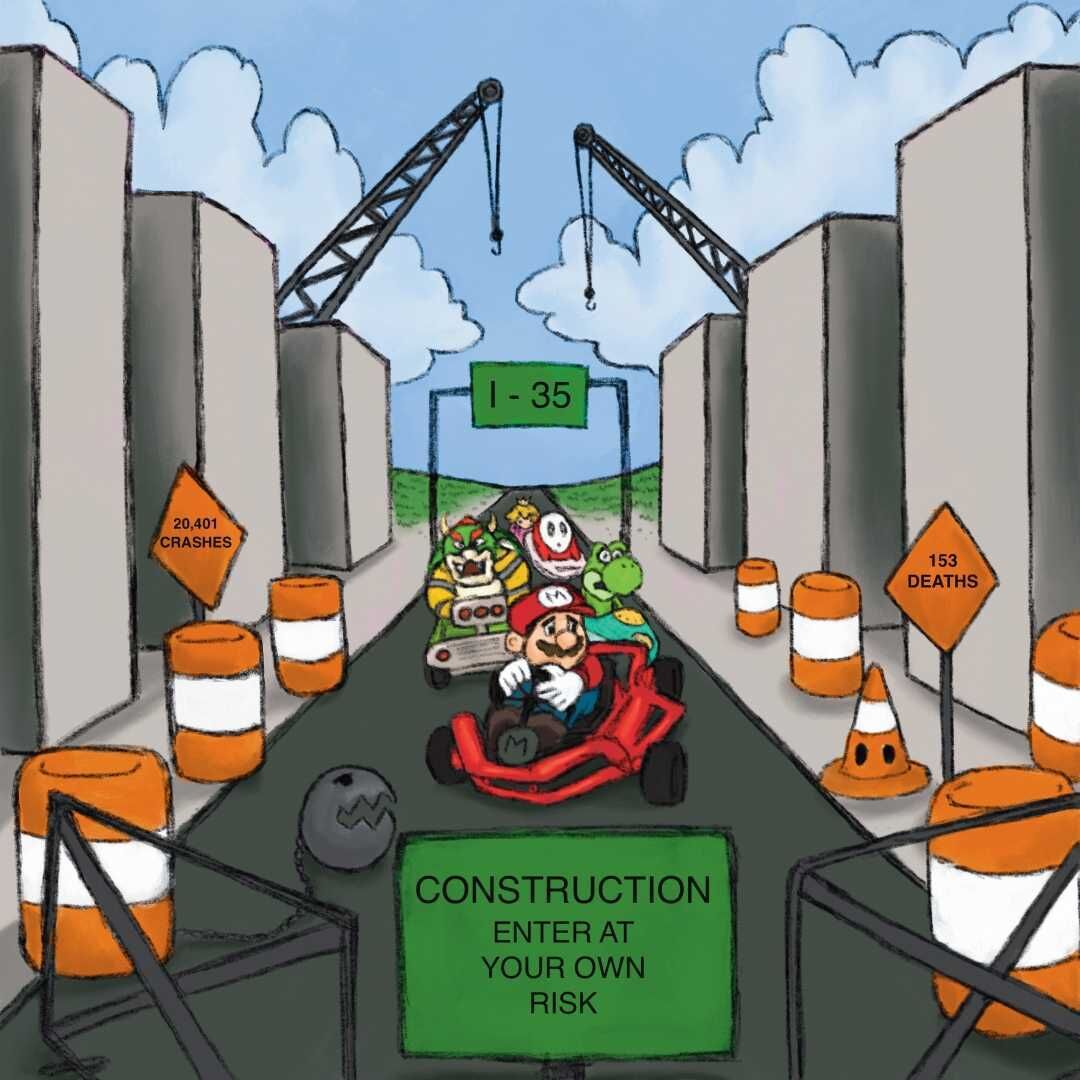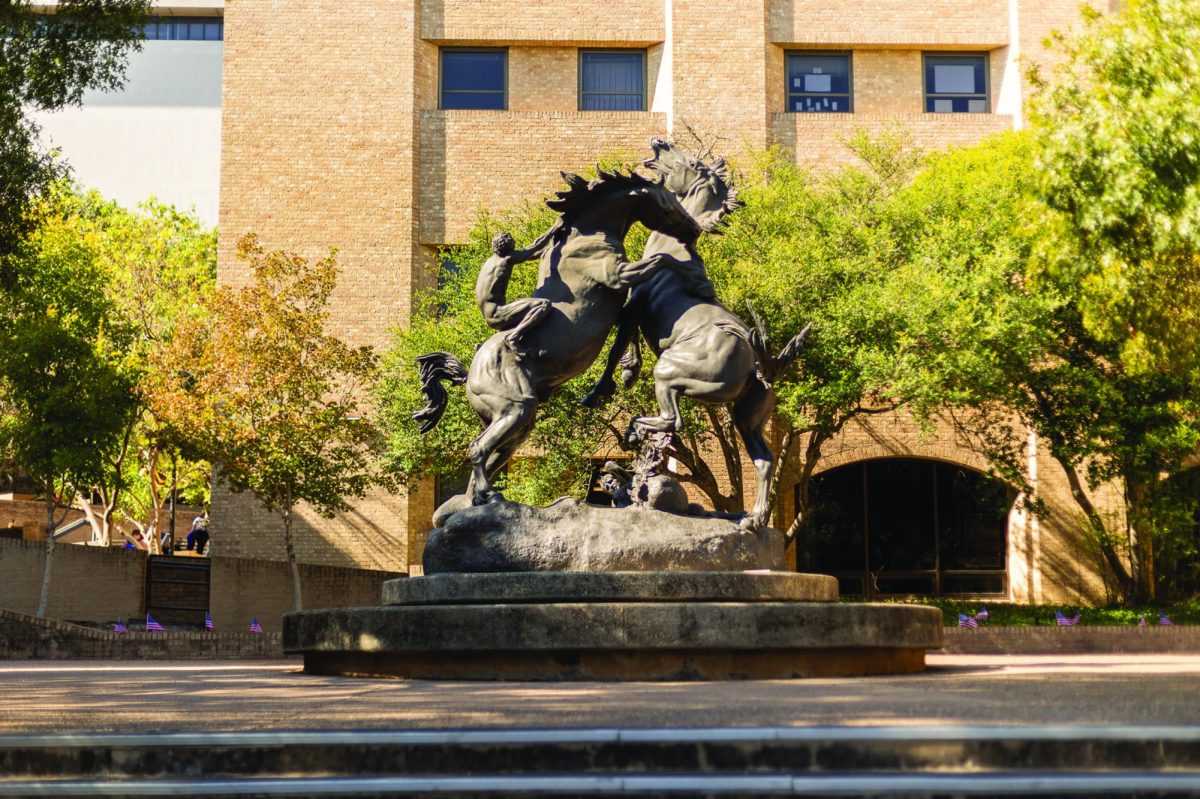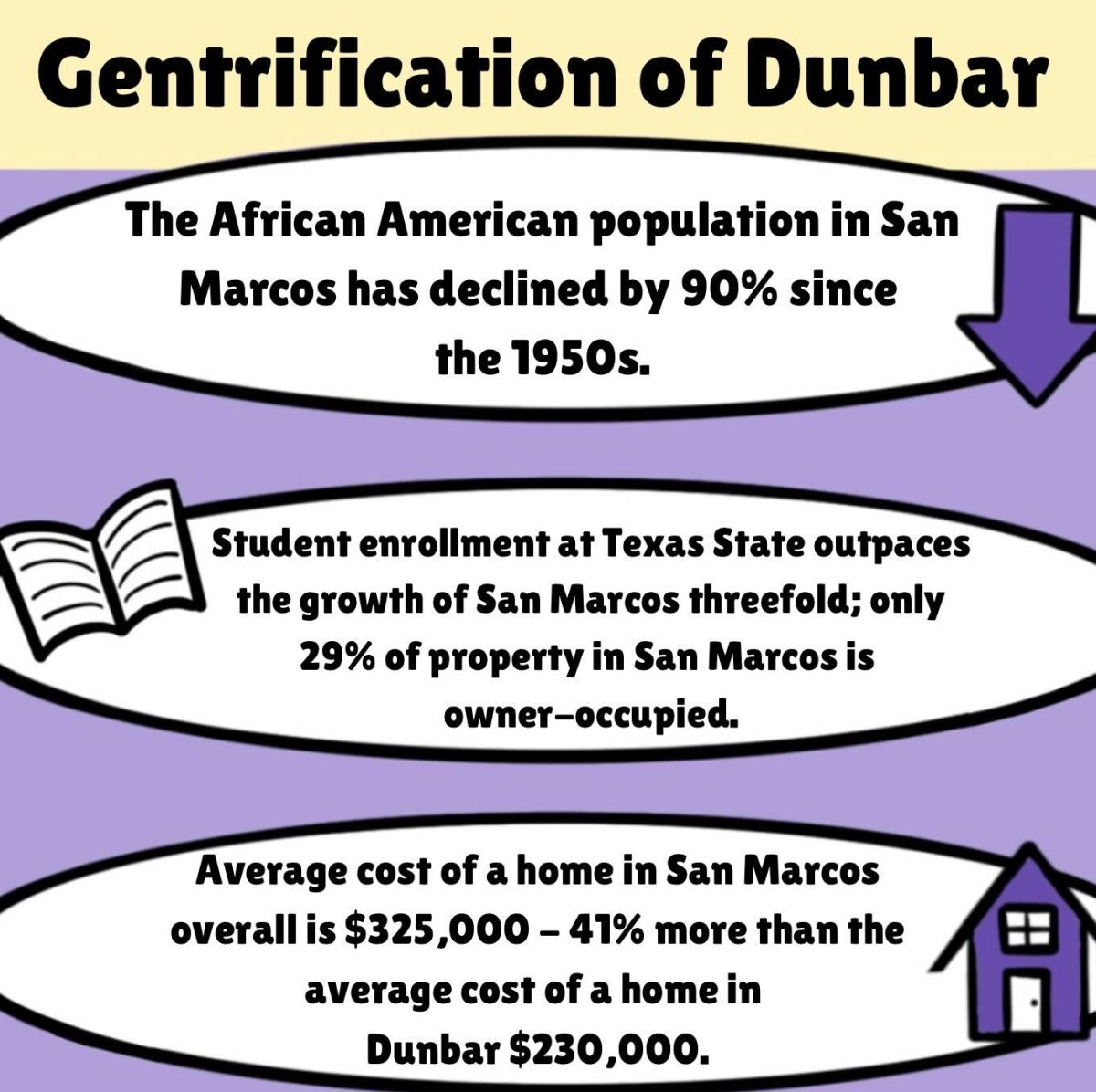The Austin-San Antonio Metroplex is one of the fastest-growing regions in the U.S. However, its only major internal line of transportation is one three-lane highway: Interstate 35 (I-35).
It should be no surprise that I-35 is full of problems. The most glaring issue faced by drivers on I-35 is the traffic and congestion that often plagues the highway due to the coexistence of various road vehicles, including commercial trucks and consumer automobiles, on a limited transportation route.
Last semester, I personally experienced the dangers of this congestion. While driving to meet friends in Austin at night, my usual I-35 route was heavily congested due to construction. Despite considering myself a good driver, I fell victim to a moment of tunnel vision. I suddenly noticed a construction-related roadblock sign ahead, causing me to collide with a parked Jeep at 75 mph. Though I sustained minor injuries, my car was totaled. This incident led me to understand the risks faced by many students driving on I-35.
I-35’s extreme use and small size are the main reasons for its congestion. But the only response from organizations such as the Texas Department of Transportation (TxDOT) has often been lengthy construction projects that do little to solve the congestion issue.
However, despite these many obstacles, the remaining goal for residents of Central Texas is to support solutions that allow for safer transportation across the region.
According to a study by Texas A&M Transportation Institute, I-35 is the third most congested roadway in Texas. The amount of crashes and serious injuries along I-35 is staggering. A study by MoneyGeek found I-35 to be the fourth deadliest highway in the U.S. Counties along I-35, such as Bexar, Comal, Hays and Travis, each had at least 2,000 crashes in 2021.
These dangers pose a significant risk to all drivers, especially students, who frequently commute on I-35 to visit friends and family or engage in late-night activities. A study found that over 40 percent of fatal car accidents occur at night, and college students are particularly vulnerable to such accidents.
The response from the Texas government has been a series of highway expansions along the entire stretch of I-35. One of the most recent is the I-35 Capital Express Project, a highway expansion for the I-35 stretch located within Austin.
TxDOT states that the project will “[add] two … lanes in each direction along I-35.” TxDOT claims these projects will reduce congestion and result in safer transportation for all drivers.
That being said, the construction involved in the expansion of I-35 has created its own world of problems. TxDOT states, “Motorists may encounter uneven pavement, narrow lanes, concrete barriers, slow-moving heavy equipment and vehicles that make sudden stops.”
TxDOT’s solution to these issues has been a public service campaign promoting personal responsibility and safety in roadwork zones. However, individual lapses in judgment can still occur, as in my own accident.
Many experts express doubts about the effectiveness of highway expansions in reducing congestion. Adam Greenfield, the executive director of Rethink35, argues that widening roads actually exacerbate traffic issues. To combat congestion, alternatives to driving must be provided.
Unfortunately, at present, there are limited alternatives to highway expansion for I-35. While bus services and public transportation options like Amtrak exist, they are insufficient to handle the daily volume of over 220,000 vehicles traversing I-35, as estimated by the Texas A&M Transportation Institute.
Alternative solutions, including public transportation initiatives like the proposed Austin-San Antonio Hyperloop, often lack political support, preventing their implementation beyond the design phase.
Even projects that are put in place, such as the Austin Connect, are often stuck in political deadlock with ever-increasing price tags. An investigation by KXAN into the Connect found that “the cost estimates for the light rail project … nearly doubled” since the project started.
Yet, that is not to say that students and residents must live with highways suffering from more and more congestion. Instead, they must focus on long-term solutions to increase the political viability of options such as public transportation.
Students involved in Engineering, City Planning, GIS, Environmental Science, or any related majors can use their skills to promote public transportation initiatives in their respective fields. In addition, it is important to vote for politicians who are in favor of public transportation initiatives that are able to service large numbers of people.
Until better public transportation options are available, Texans must support expansion projects for I-35. These projects are often only marginally better than doing nothing at all. Long-term solutions to make public transportation a viable option must be supported.
-James Phillips is a history sophomore
The University Star welcomes Letters to the Editor from its readers. All submissions are reviewed and considered by the Editor-in-Chief and Opinion Editor for publication. Not all letters are guaranteed for publication.
Opinion: Traveling across Central Texas is a nightmare
James Phillips, Opinions Contributor
July 5, 2023
2
Donate to The University Star
Your donation will support the student journalists of Texas State University. Your contribution will allow us to purchase equipment and cover our annual website hosting costs.
More to Discover














